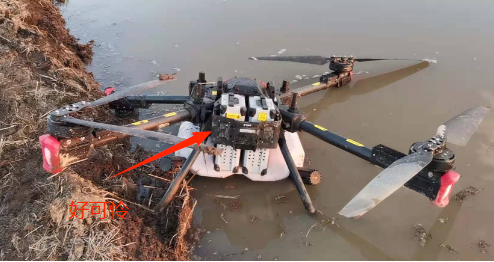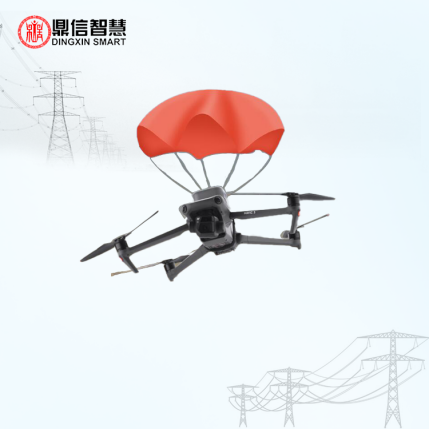The soaring demand for electricity, power inspectors can not manage over N more transmission lines. Because transmission lines through a variety of complex environments, high altitude terrain, simply increasing the workload of power inspectors and you take the degree, and power selection of blind spots, danger, low efficiency, difficulty and other issues, can be described as worry bad power inspectors.
In the development of recent years, some power supply companies have adopted drones to carry out transmission line inspection, quickly find circuit faults, eliminate ice cover and other roles. Drones have considered some safety issues at the time of design, but in complex application scenarios, certain issues will still pop up, such as signal loss, electromagnetic interference, etc., resulting in physical injury to innocent people, loss of drones and other issues, too many unknown factors affect the flight safety of drones.
In response to the risk of falling drones during flight, and in conjunction with daily practical needs, our company has developed and launched the DX-UAV100-S1. DX-UAV100-S1, which is not only applicable to a variety of drone models on the market, but also has a series of unique and useful functions to ensure that the drone can land safely and avoid damage when facing an unexpected situation.
Its core function lies in the anti-drop buffer design, before the drone takes off, users only need to simply install the device to the back of the drone, once the drone encounters a serious collision, the angle of the side flip reaches 90 °, the air stops or the speed of free fall exceeds the preset value, the cushioning airbags inside the device will be quickly unfolded, which can effectively slow down the speed of the drone's descent, reduce the drone's damage caused by direct impact on the ground, and at the same time Avoid possible personnel injury and equipment damage.
The device adopts a number of innovative designs in terms of technology. Firstly, its parachute cloth area is large, and its descending speed test can reach 5.5m/s on average (take Elf 4 as an example), and it will not interfere with the RTK module and gimbal of the UAV. Secondly, the device adopts a replaceable canopy design, which allows users to choose the standard or Plus version of the canopy to suit different models. The process of replacing the canopy is simple and quick, saving users' time and energy.
In addition, the device is equipped with APS scoring algorithm, which is transplanted from industry-grade UAV parachute technology and is capable of sensing the UAV's six-direction attitude in real time and responding within milliseconds, and Dual-Core scoring, which combines the data from barometers and attitude sensors to provide an all-around assessment of the real-time condition of the UAV. The application of these technologies enables the device to accurately determine the flight status of the drone, and once it senses a dangerous situation, it can quickly activate the cushioning airbags to safeguard the safety of the drone.
What a lot of effort has been put into the user experience as well. The device is equipped with independent firmware and memory (black box), which can collect and process omnidirectional attitude and barometer data in real time, providing a strong guarantee for flight safety. Meanwhile, it has a long endurance, and the 150 mAh battery can meet the endurance requirements of 30min*6 flights of the drone. In addition, the device has a new sound warning/prompt, through the buzzer to send out command prompts and continuous chirping after the opening of the parachute, which is convenient for users to listen to the sound defense!
Any drone owners out there, why don't you get your own drones set up quickly?






